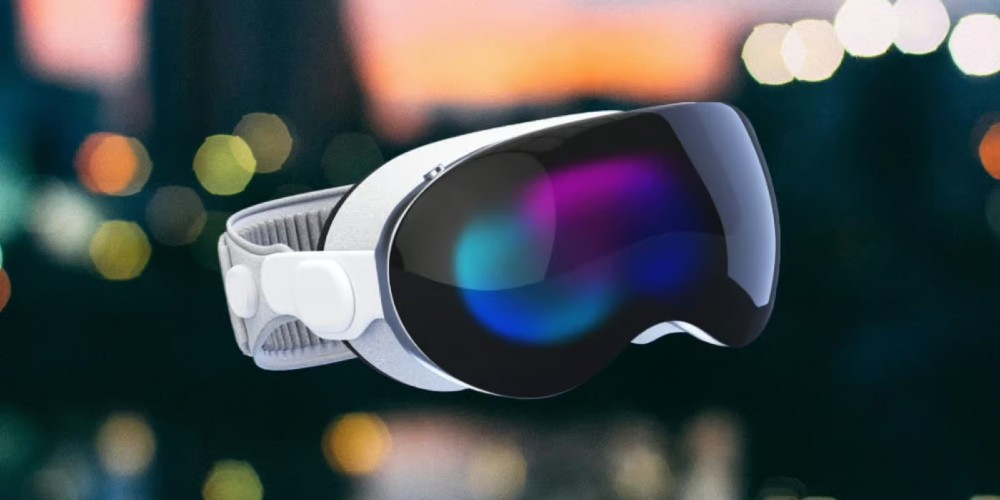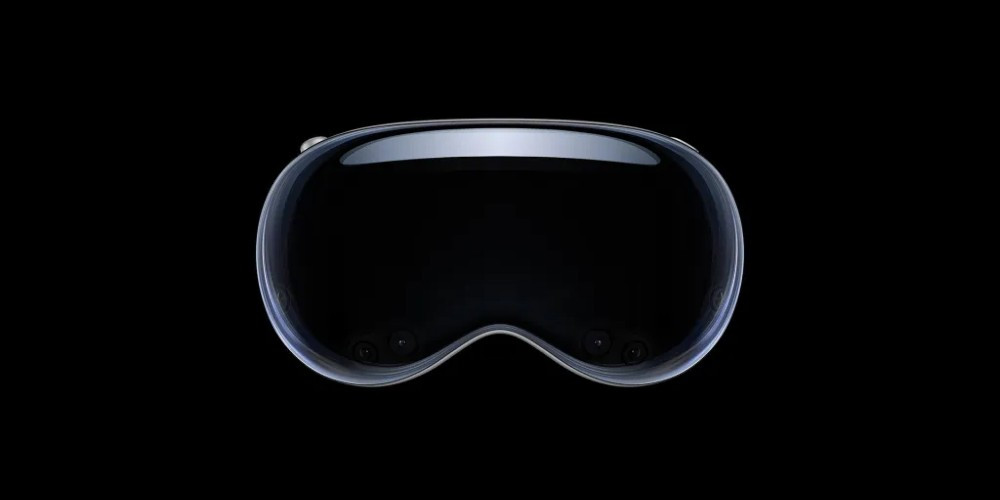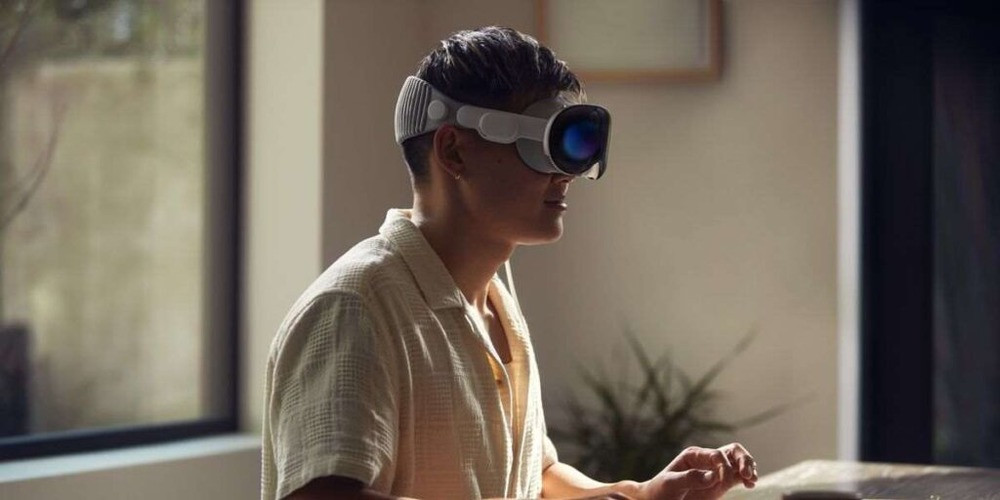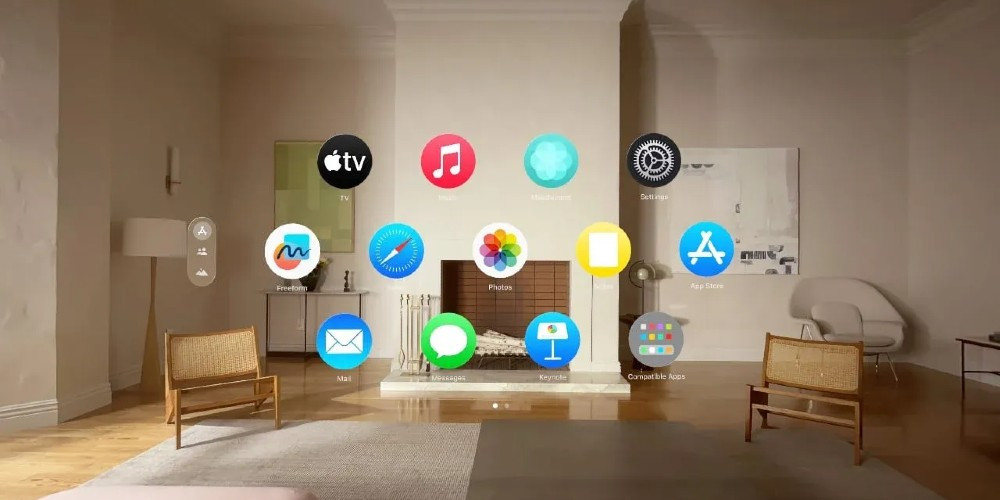The Cybersecurity Implications of Embracing the Apple Vision Pro

The introduction of the Apple Vision Pro, an innovative mixed reality interface, has set the tech world abuzz with its promise of blending the real and virtual worlds through hand movements. This groundbreaking device, echoing the familiar interface and applications of its brand's predecessors, pledges an immersive experience like no other. Despite its allure, cybersecurity experts at ESET have raised alarms over potential digital security threats that could compromise user safety in this augmented reality.
The New Frontier: Apple Vision Pro's Cybersecurity Landscape
The Vision Pro Apple emerges as a pinnacle of technological innovation, diving into new and unexplored areas of cybersecurity. With its novel operating system designed to enhance user interaction with the environment, the device could inadvertently introduce behavioral vulnerabilities. These potential anomalies, highlighted by cybersecurity firm ESET, could serve as entry points for malicious entities, jeopardizing user safety and data integrity.
Identified Anomalies and Their Implications

ESET's scrutiny of the Apple Vision Pro has unearthed several areas of concern. Excessive window openings could mar the user experience, making navigation cumbersome and potentially exposing users to unwanted content. System overloads, triggered by application malfunctions, could freeze the interface, affecting visibility and device functionality. Furthermore, unexpected alterations in sensor and camera behaviors could endanger physical well-being, making accurate environmental interaction problematic.
Vulnerabilities and Privacy Concerns
The unique composition of the Apple Vision Pro, coupled with its operating system and application framework, may harbor vulnerabilities exploitable by cybercriminals. Instances of ransomware could lock users out of their devices, presenting them with the distressing choice between seeking Apple's intervention or conceding to ransom demands. Moreover, the presence of Trojans could grant attackers invasive access to the device's cameras and sensors, compromising user privacy to an alarming degree.
The Privacy Paradox: Beyond Personal Data

The Apple Vision Pro's reliance on cameras and sensors to map surroundings extends privacy concerns beyond personal data exposure. The device's constant environmental mapping, done without direct user observation, raises significant issues regarding consent, especially when used in public spaces. This capability to film and map people and locations without their permission could contravene evolving data protection laws, posing legal and ethical dilemmas.
Exposing the Unseen: Unintended Consequences
Within the controlled confines of a user's environment, sensitive information exposure becomes an increased risk. The device's detailed environmental mapping and personal moment capture could inadvertently expose intimate details about a user's life, from religious beliefs to political affiliations. This risk is magnified in public settings, where the device could analyze bystanders, correlating their presence and personal details without consent.
Navigating the Cybersecurity Minefield of Mixed Reality

The emergence of mixed reality interfaces like the Apple Vision Pro heralds a new era in technology, blending the digital and physical worlds in unprecedented ways. However, this fusion brings forth complex cybersecurity challenges, necessitating vigilant measures to safeguard user privacy and data. The potential vulnerabilities and privacy concerns underscored by ESET highlight the critical need for robust security frameworks and user awareness in navigating this pioneering technological landscape.
Looking Forward: The Path to Secure Mixed Reality
As mixed reality technology evolves, so too must the cybersecurity measures designed to protect it. The Apple Vision Pro represents just the beginning of a transformative journey in user interaction and digital immersion. By addressing the identified vulnerabilities and privacy concerns, developers can fortify this promising technology against cyber threats, ensuring a secure and enjoyable user experience for all.
Conclusion: Embracing Innovation with Caution
The Apple Vision Pro stands at the frontier of mixed reality, offering a glimpse into a future where the digital and physical realms intertwine seamlessly. However, the cybersecurity risks highlighted reveal the complexities of safeguarding privacy and security in this new domain. As we venture into this exciting yet uncertain landscape, a cautious approach, underpinned by robust cybersecurity practices and ethical considerations, will be paramount in realizing the full potential of mixed reality technologies without compromising user safety.
Latest posts
See more-
![The Last of Us Part II: In-Depth Character Analysis and Storyline Exploration]() Editor’s Choice
2024-08-11
The Last of Us Part II: In-Depth Character Analysis and Storyline Exploration
The Last of Us Part II is an action-adventure video game that has gained significant popularity since its inception. Developed with immense creative prowess by...
Editor’s Choice
2024-08-11
The Last of Us Part II: In-Depth Character Analysis and Storyline Exploration
The Last of Us Part II is an action-adventure video game that has gained significant popularity since its inception. Developed with immense creative prowess by...
-
![CrossCode Developer Announces Alabaster Dawn, Enters Early Access in Late 2025]() News
2024-08-12
CrossCode Developer Announces Alabaster Dawn, Enters Early Access in Late 2025
In 2021, Radical Fish Games initially introduced a new action RPG titled Project Terra. Now, they have officially named it Alabaster Dawn and announced that...
News
2024-08-12
CrossCode Developer Announces Alabaster Dawn, Enters Early Access in Late 2025
In 2021, Radical Fish Games initially introduced a new action RPG titled Project Terra. Now, they have officially named it Alabaster Dawn and announced that...
-
![Alabaster Dawn Planned to Have 30-60 Hours of Playtime, Demo Launching in Early 2025]() News
2024-08-13
Alabaster Dawn Planned to Have 30-60 Hours of Playtime, Demo Launching in Early 2025
Radical Fish Games has made an exciting announcement regarding their upcoming action RPG, Alabaster Dawn, which is set to enter early access in 2025. In...
News
2024-08-13
Alabaster Dawn Planned to Have 30-60 Hours of Playtime, Demo Launching in Early 2025
Radical Fish Games has made an exciting announcement regarding their upcoming action RPG, Alabaster Dawn, which is set to enter early access in 2025. In...
Latest Reviews
See more-
![]() Action
Cult of the Lamb
Action
Cult of the Lamb
-
![]() Action
WILD HEARTS™
Action
WILD HEARTS™
-
![]() Casual
Gacha Club
Casual
Gacha Club
-
![]() Action
Call of Duty®: Warzone™ 2.0
Action
Call of Duty®: Warzone™ 2.0
-
![]() Action
Gacha Cute
Action
Gacha Cute
-
![]() Action
Cuphead - The Delicious Last Course
Action
Cuphead - The Delicious Last Course










